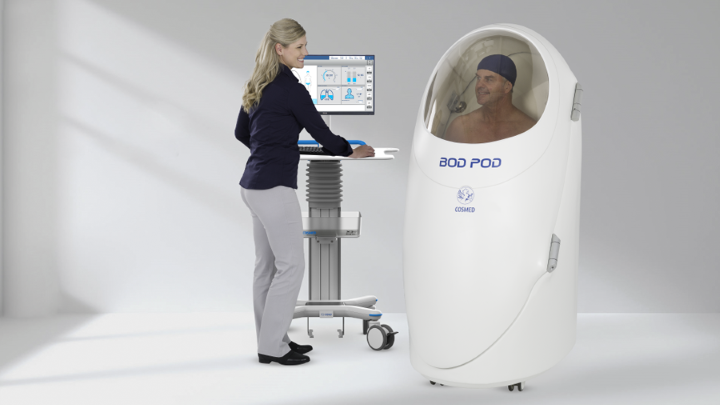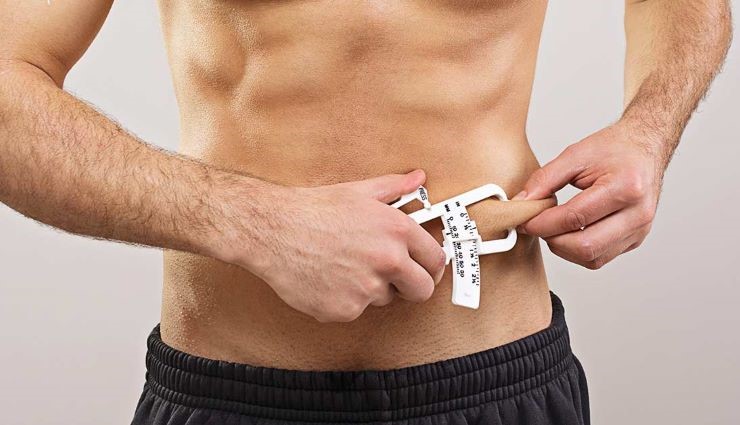Do you keep stepping on the scale to check how much weight you’ve gained or lost? Maybe you keep checking your body mass index or BMI to determine your weight range. Weight and BMI index do not provide much information about the body’s health status. One of the critical determinants of health is the ratio of non-fat mass, such as muscle and bone, to body fat. Body composition is measured to measure this ratio, providing a more accurate description of the body’s health status. In this article, we will learn more about this index and explain how to measure and change it.
What is body composition, and why is it important?
Doctors and specialists use the term body composition to express the percentage of fat, bone, muscle, and other body tissues. By knowing this index, you can get more accurate and detailed information about your health.
Consider this example for a better understanding. Two people with the same weight may have completely different physical health conditions, and this difference is determined by body composition. You can’t know your fat and muscle mass by going on the scale. The less fat and more muscle it has, the healthier it is. So, by knowing your body composition and the amount of fat and power in your body, you can determine what you should do to improve your health.
What does body composition measure?
1. body fat
There are different types of fat in the human body. Essential body fat is present in human organs, muscles, and brain, making significant body processes easier. The most harmful type of fat is visceral fat, which accumulates around the digestive organs, liver, and heart. Excess of this fat in the body increases the possibility of heart disease and other health problems.
2. Non-fat body mass
The non-fat mass of the body consists of muscles, bones, organs, and the amount of water in the body. The powers that are considered as non-fat mass are:
- Skeletal muscles that are in our hands;
- smooth muscles that exist in body organs and help their automatic function;
- Cardiac muscles regulate the operation and pumping of the heart.
The difference in body composition, body mass index, and weight
The number you see on the scale is just your weight. BMI is also determined based on only two factors: height and weight. Body composition is a more accurate measure based on various factors, and with its help, we understand what percent of our weight is non-fat mass and what percent is fat mass.
Ways to determine body composition
There are different ways to determine body composition. There are scales that manufacturers claim are equipped with a Dexa scan and can assess body composition. Experts say these scales are unreliable and do not provide accurate results. This section introduces the most reliable solutions for determining this index.
1. Measurement of skin folds
They use a device called a caliper to measure skin folds. With the help of this device, the thickness of skin folds in different parts of the body is measured. This device is not expensive and gives an accurate answer if you use the proper technique. It is necessary to know that in this type of measurement, a lot of human error occurs due to the lack of people’s skills, so it is essential to refer to an expert for this work.
2. Bone density scan
In the Dexa scan (dual-energy X-ray absorptiometry scan), X-rays measure bone, muscle, and fat density. The advantage of this scan is to measure bone density in addition to 2 other factors. In the Dexa scan, you must lie on a special imaging scanner. Then, the specialist records images of bones, non-fat mass, and body fat and measures bone density.
3. Weighing underwater
Your body fat mass will be determined if you weigh yourself while underwater. Since fat floats in water, someone with more muscles will consider more underwater. It should be noted that special equipment is needed to perform this method.
4. Bioelectric Impedance Analysis (BIA)
In this method, the current of electricity passes through your body, and the specialist determines your body composition by considering the wind speed. Muscles have less resistance to electric current, so the current passes through power faster than fat.
5. Plethysmography of the body or wind pod

Plethysmography is similar to underwater weighing, with the difference that air is used instead of water. In this method, you must sit in an egg-shaped capsule that measures your body weight and volume density to determine your body composition. This method is more accurate than other methods.
Factors affecting body composition
Some factors affect body composition, and we have no control over them. Unlike BMI, body composition takes into account factors such as:
- Age: With age, muscles are lost, affecting the body’s composition. Of course, the breakdown of muscles is directly related to reduced physical activity in old age.
- Gender: Women’s bodies have more fat than men’s bodies from birth.
- Hormones: Hormones and hormonal changes have a significant effect on body composition. For example, menopause in women leads to a sharp increase in fat in the body. On the other hand, testosterone, which is a male hormone, increases muscle building.
- Genetics: According to research, children inherit the same body composition as their parents. Of course, this body composition changes to some extent with time and the change in the child’s lifestyle.
Solutions to change and improve body composition
Each person’s body composition is unique. A health professional will help you better understand the details of your body composition, body fat percentage, and muscle mass and guide you on how to change it if necessary. In this section, we have presented simple and reliable solutions to change and improve body composition.
1. exercise
The first obvious option to lose fat and build muscle is exercise. According to one research, HIIT exercises, which include cycling and sprinting, are beneficial for fat loss and muscle building. Strength and resistance exercises also build muscle at any age. This sports category in older generations partially slows down the process of bone loss and body weakness.
2. Eat more protein
If you want to build muscle, eat more protein. Consuming more protein along with resistance exercises helps to develop muscles and limits the process of muscle wasting.
3. Avoid processed foods
To reduce body fat, it is recommended to have a balanced diet. For example, the Mediterranean diet reduces inflammation and prevents type 2 diabetes and heart disease.
you say
Body composition is a good measure of body health, which is influenced by many factors, including age, gender, hormones, lifestyle, and genetics. So, take a big step towards health by visiting a specialist who will correct your diet and lifestyle by examining your body composition.
Did you use your weight and BMI as a measure of your health?
Warning! This article is only for educational purposes; to use it, it is necessary to consult a doctor or specialist.



